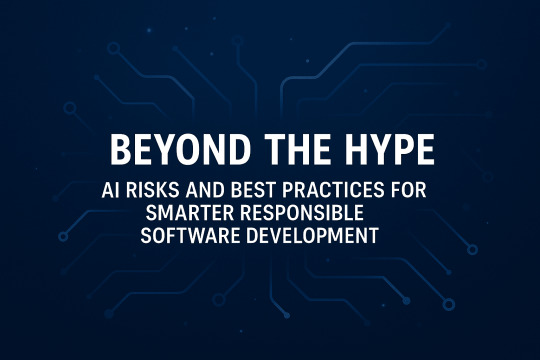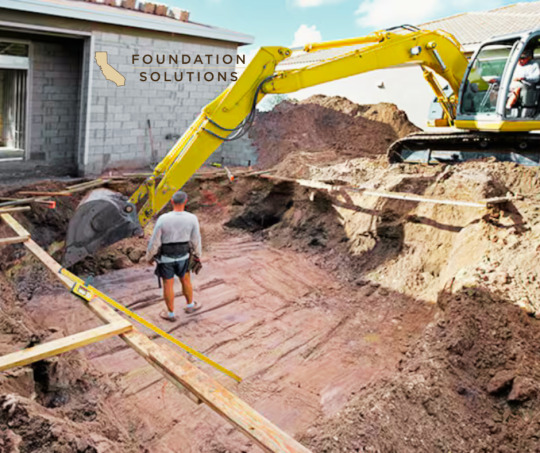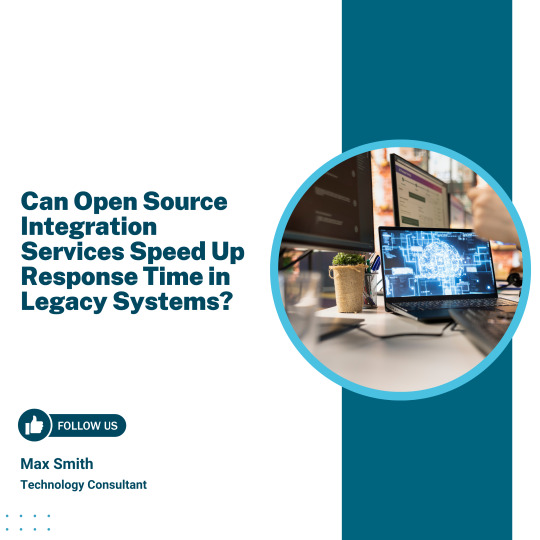#software deployment process
Explore tagged Tumblr posts
Text
AI is transforming how we build software, but it also brings unique risks. This follow-up explores real challenges companies face when integrating AI across the SDLC, with phase-by-phase best practices for responsible, secure, and ethical adoption. Discover how to balance innovation and caution to build smarter, safer software.

View On WordPress
#AI#AI challenges#Artificial Intelligence#Coding Phase#Continuous Operations#Detailed Design#DevOps#SDLC#Software Analysis#Software Architecture#Software Construction#Software Deployment#Software Design#Software Development#Software Development Life Cycle#Software Development Process#Software Engineering#Software Maintenance#Software Retirement#Software Testing
0 notes
Text
0 notes
Text
Future Of AI In Software Development

The usage of AI in Software Development has seen a boom in recent years and it will further continue to redefine the IT industry. In this blog post, we’ll be sharing the existing scenario of AI, its impacts and benefits for software engineers, future trends and challenge areas to help you give a bigger picture of the performance of artificial intelligence (AI). This trend has grown to the extent that it has become an important part of the software development process. With the rapid evolvements happening in the software industry, AI is surely going to dominate.
Read More
#Accountability#Accuracy Accuracy#Advanced Data Analysis#artificial intelligence#automated testing#Automation#bug detection#code generation#code reviews#continuous integration#continuous deployment#cost savings#debugging#efficiency#Enhanced personalization#Ethical considerations#future trends#gartner report#image generation#improved productivity#job displacement#machine learning#natural language processing#privacy privacy#safety#security concerns#software development#software engineers#time savings#transparency
0 notes
Text
CI/CD practices have revolutionized the software development process by automating key aspects of building, testing, and deploying software, resulting in faster development cycles
#Devops#Devops Process#Automation Tool#Devops Practice#Software Development Practice#Software Development Lifecycle#Software Development Best Practice#Continuous Deployment#Continuous Integration#CI CD#CI CD Pipeline#CI CD Tools#Continuous Delivery
0 notes
Text
https://thepoolvision.com/mvp/

Mastering Project Management with MVP: Building Successful Software
In the fast-paced world of software development, where innovation drives success, the concept of the Minimum Viable Product (MVP) has emerged as a game-changer. MVP project management has revolutionized how startups and entrepreneurs approach software development, allowing them to validate ideas, minimize risks, and maximize outcomes.
We'll delve into the depths of MVP software development, exploring its lifecycle, methodologies, benefits, and real-world success stories.
#MVP Software Development#Proof of Concept Services#Minimum Viable Product Launch#MVP Development Lifecycle#Lean Development Methodology#MVP Iteration and Refinement#Cost-Effective MVP Solutions#MVP for Startups#MVP for Entrepreneurs#MVP User Experience Design#MVP Validation Process#MVP Development Framework#MVP Performance Testing#MVP Deployment Strategy
1 note
·
View note
Text
Developers and admins in Salesforce should constantly be on the lookout for effective deployment tools for answering questions, resolving bugs, and keeping the production organs in the best possible condition. However, there are times when developers might encounter a stumbling block in the event of testing the changes they have made to the Salesforce sandbox before deployments are made to the production environment.
Planning to hire Salesforce Development Company? Connect Now
#devops process#salesforce deployment#salesforce deployment tools#software development#custom software development#asp.net development#.net development
0 notes
Text
How Do F1 Cars Work?: Setup pt 1
Alright, so I wanted to explore car setups and how they effect F1 cars. Enjoy!
So, setting up an F1 car is a very complex process, They have to balance numerous elements in the car to suit things like weather, track type, driving styles, etc. But what do they actually alter on the car? And how does it effect the driving?
Altered Components:
Aerodynamics - The easiest and most obvious adjustments are to the aerodynamics, like the rear wings or front wings. These are usually the ones chosen for change in aerodynamics, but they might also change the side pods or diffusers to effect the downforce of the car. They most often change aerodynamics for circuit styles. A tight street circuit will require higher downforce set up, as it gives them more control around the corners. A classic circuit will often switch to a low downforce set up, which gives them speed on the straights. Most teams try to have a good balance, however.
Suspension - Suspension settings control how the car responds to bumps and turns. Whenever they discuss a car porpoising too much, it is usually because the suspension set up is wrong. They change variables including ride height (distance between lowest point of car and track surface), camber (angle of wheels relative to the vertical axel from the front), toe (angle of front wheel when viewed from above), stiffness of springs, and anti-roll bars (parts that connect left and right suspension systems, which help control body roll). For example, cars can have negative or positive camber, which really effect things like grip, tire wear, etc. These aspects of setup are usually altered to suit a drivers style and preferences.
Tire Setup - This essentially envelopes tire pressure and starting temperature, which impact grip and wear rates. For example, lower tire pressure increases the grip, but leads to faster degradation. Higher does the opposite. This is usually altered depending on track temperature and style, or even ti make up for their weak areas. If they do not have good tire management, for example, they may alter the tire setup to degrade slower.
Differential - This controls the relative speed of the rear wheels, a big part of traction control. It is adjusted to either open or lock more. An open differential allows the rear wheels to rotate at different speeds, helping with corner entry but leading to oversteer a lot of the time. A locked differential keeps the wheels rotating together, offering stability on exits but leading to a lot of understeer. This is an aspect that is often changed to suit driver preference. Some can handle the oversteer very well, but other find understeer easier to deal with.
Brake Balance - This is the balance between the front and rear brakes, and is used to prevent lockup (when too much force is applied to the brakes, causing the disc to stop or rotate slower than the car's motion) and improve stability. This is altered by changing the bias, or distribution of braking force, and is often discussed in terms of percentages. More rear brake bias improves rotation in corners, but increases chance of rear lockup. More front brake bias stabilized braking, but can make turn-in more challenging.
Engine Mapping- This refers to the software settings in the car that controls how the engine delivers power. Things like throttle response, fuel injection, ignition timing, and turbo settings are all altered. All of it changes how a car accelerates, responds to stimuli, and consumes fuel. The different types of maps include qualifying maps (max power for short time), race maps (balanced and conservative), fuel-saving maps (usually end of race), and wet maps (softer throttle response, less sensitive car). ERS Deployment is a big part of this, and refers to the management of the kinetic and heat generators. They choose different ERS deployment depending on what they plan to do. For example, if they are planning on trying to overtake they will charge their battery and then use a lot of power to give the car a boost.
Gear Ratios - These ratios determine the relationship between the RPM (engine speed) and the speed of the wheels. There are eight forward gears in F1, and each one changes this ratio to some degree. The ratios dictate how much the engine must rev for the wheels to turn at a certain speed. The two major types of gear ratios are long ratios and short ratios. Long ratios reduce the torque but allow for higher top speeds, suited for tracks with long straights. Short ratios provide more torque which allows for faster acceleration, better for twisty tracks.
Setup Types:
While there are so many different aspects to set up, there are a few main types that most teams follow. Between them, a variety of factors change, but the core of them remains the same.
High-Downforce - One of the most basic set ups, it prioritizes grip on corners by increased downforce. Usually used for twisty, slow-medium circuits like Monaco or Singapore.
Low-Downforce - The other more basic setup, it lowers generated downforce to minimize drag and optimize for straight-line speed. It does sacrifice corner grip, so is best suited for classic circuits like Silverstone or Monza.
Wet - In wet races DRS is disabled, and drag is at an all time high. So teams usually focus on getting a huge amount of downforce, making car less sensitive, and making sure their tire set up is as grippy as possible. The differential is also changed, as drivers should be able to keep traction, ride height is raised, and suspension is softened. This is kind of a subsection of the high-downforce set up, though for different reasons.
High/Low Temp - Both hot and cold temperatures have massive impacts on F1 cars. So if they know they will have a race with an extreme on either side, the set up must be altered to reflect that. In hot Singapore, for example, they must lower tire pressure, change the camber, and boost the cooling systems to avoid overheating engine and degrading tires fast. In cold Montreal, tire pressures are raised, brakes are placed in different settings to keep warm, and the camber is also changed.
Alright, I will continue my discussion on setups in next post, as this one is getting quite long.
Cheers,
-B
44 notes
·
View notes
Text

Definitely, there is a time for everything.
I was desperate not long ago, so I decided to quit all my hobbies to study really hard, or at least 4 hours a day like I did during my graduation (I graduated in IT Management). The main thing I discovered is that even if I don't get the job I want, the person I will become—someone with real knowledge of the Software Engineering process, from the bare bones to deployment—will be worth it and enjoyable to become.
Because of this, I started to perform better in interviews and made new friends on Discord servers for programming languages.
Okay, I’m not saying that everyone will be surrounded by friends by studying like this, we need a pretty time alone to accomplish many things. But the point is, the more you talk about it, the more you attract things related to it.
#coding#developer#linux#programmer#programming#software#software development#student#study aesthetic#study blog#study#studyblr#study motivation#studying#student life#book#notes#studynotes#software engineering#information technology#java#kafka#apachekafka
40 notes
·
View notes
Text
From Design to Deployment: How Switchgear Systems Are Built

In the modern world of electrical engineering, switchgear systems play a critical role in ensuring the safe distribution and control of electrical power. From substations and factories to commercial buildings and critical infrastructure, switchgear is the silent guardian that protects equipment, ensures safety, and minimizes power failures.
But have you ever wondered what goes on behind the scenes, from the idea to the actual installation? Let’s dive into the full journey — from design to deployment — of how a switchgear system is built.
Step 1: Requirement Analysis and Load Study
Every switchgear project begins with requirement analysis. This includes:
Understanding the electrical load requirements
Calculating voltage levels, short-circuit ratings, and operating current
Identifying environmental conditions: indoor, outdoor, temperature, humidity
Reviewing applicable industry standards like IEC, ANSI, or DEWA regulations (especially in UAE)
This stage helps engineers determine whether the project needs low voltage (LV), medium voltage (MV), or high voltage (HV) switchgear.
Step 2: Conceptual Design & Engineering
Once the requirements are clear, the conceptual design begins.
Selection of switchgear type (air insulated, gas insulated, metal-enclosed, metal-clad, etc.)
Deciding on protection devices: MCCBs, ACBs, relays, CTs, VTs, and fuses
Creating single-line diagrams (SLDs) and layout drawings
Choosing the busbar material (copper or aluminum), insulation type, and earthing arrangements
Software like AutoCAD, EPLAN, and ETAP are commonly used for precise engineering drawings and simulations.
Step 3: Manufacturing & Fabrication
This is where the physical structure comes to life.
Sheet metal is cut, punched, and bent to form the panel enclosures
Powder coating or galvanizing is done for corrosion protection
Assembly of circuit breakers, contactors, protection relays, meters, etc.
Internal wiring is installed according to the schematic
Every switchgear panel is built with precision and must undergo quality control checks at each stage.
Step 4: Factory Testing (FAT)
Before deployment, every switchgear unit undergoes Factory Acceptance Testing (FAT) to ensure it meets technical and safety standards.
Typical FAT includes:
High-voltage insulation testing
Continuity and phase sequence testing
Functionality check of all protection relays and interlocks
Mechanical operations of breakers and switches
Thermal imaging to detect hotspots
Only after passing FAT, the switchgear is cleared for shipping.
Step 5: Transportation & Site Installation
Transportation must be handled with care to avoid damage to components. At the site:
Panels are unloaded and moved to their final location
Cabling and bus duct connections are established
Earthing systems are connected
Environmental sealing is done if installed outdoors or in dusty environments
Step 6: Commissioning & Site Acceptance Testing (SAT)
This final stage ensures the switchgear is ready for live operation.
Final checks and Site Acceptance Tests (SAT) are performed
System integration is tested with other components like transformers, UPS, and generators
Load tests and trial runs are conducted
Commissioning report is generated, and documentation is handed over to the client
Conclusion
From idea to execution, the journey of building a switchgear system is highly technical, safety-driven, and precision-based. Whether you’re in power generation, industrial automation, or commercial construction, understanding this process ensures you choose the right system for your needs.
7 notes
·
View notes
Text
The progeny of “move fast and break things” is a digital Frankenstein. This Silicon Valley mantra, once celebrated for its disruptive potential, has proven perilous, especially in the realm of artificial intelligence. The rapid iteration and deployment ethos, while fostering innovation, has inadvertently sown seeds of instability and ethical quandaries in AI systems.
AI systems, akin to complex software architectures, require meticulous design and rigorous testing. The “move fast” approach often bypasses these critical stages, leading to systems that are brittle, opaque, and prone to failure. In software engineering, technical debt accumulates when expedient solutions are favored over robust, sustainable ones. Similarly, in AI, the rush to deploy can lead to algorithmic bias, security vulnerabilities, and unintended consequences, creating an ethical and operational debt that is difficult to repay.
The pitfalls of AI are not merely theoretical. Consider the deployment of facial recognition systems that have been shown to exhibit racial bias due to inadequate training data. These systems, hastily integrated into law enforcement, have led to wrongful identifications and arrests, underscoring the dangers of insufficient vetting. The progeny of “move fast” is not just flawed code but flawed societal outcomes.
To avoid these pitfalls, a paradigm shift is necessary. AI development must embrace a philosophy of “move thoughtfully and build responsibly.” This involves adopting rigorous validation protocols akin to those in safety-critical systems like aviation or healthcare. Techniques such as formal verification, which mathematically proves the correctness of algorithms, should be standard practice. Additionally, AI systems must be transparent, with explainable models that allow stakeholders to understand decision-making processes.
Moreover, interdisciplinary collaboration is crucial. AI developers must work alongside ethicists, sociologists, and domain experts to anticipate and mitigate potential harms. This collaborative approach ensures that AI systems are not only technically sound but socially responsible.
In conclusion, the progeny of “move fast and break things” in AI is a cautionary tale. The path forward requires a commitment to deliberate, ethical, and transparent AI development. By prioritizing robustness and accountability, we can harness the transformative potential of AI without succumbing to the perils of its progeny.
#progeny#AI#skeptic#skepticism#artificial intelligence#general intelligence#generative artificial intelligence#genai#thinking machines#safe AI#friendly AI#unfriendly AI#superintelligence#singularity#intelligence explosion#bias
3 notes
·
View notes
Text
Discover how Artificial Intelligence is transforming the entire software development lifecycle (SDLC) — from requirements gathering to deployment and maintenance. In this article, we explore how AI tools boost productivity, enhance quality, and reshape the way teams build modern software. Learn how developers and organizations can harness AI as a powerful collaborator in creating faster, smarter, and more reliable applications.
#AI#Architecture Analysis#Artificial Intelligence#Automated Testing#Coding Phase#Design#Detailed Design#Operating Software#Requirements Elicitation#SDLC#Shifting Left Security#Shifting Left Testing#Software Architecture#Software Construction#Software Deployment#Software Development#Software Development Life Cycle#Software Development Process#Software Engineering#Software Maintenance#Software Retirement
0 notes
Text
Unveiling The Intricacies Of Excavation: Delving Deeper During Construction

Excavation: the simple term encapsulates a myriad of skills, procedures, and safety measures that contribute significantly to every construction project. Most construction work begins with the careful removal of earth, making a hole or channelling the ground to prepare for the erection of buildings or laying of pipelines. As commonplace as it might seem, excavation is a crucial part of construction that requires extensive planning, expertise and precision.
To begin with, what exactly is excavation? Technically, it’s the process of moving earth, rock or other materials from a site with tools, equipment, or explosives. It includes earthwork, trenching, wall shafts, tunnelling and underground. Yet, in the context of construction, excavation extends beyond mere digging. It modulates the terrain to suit the structural requirement, ensuring the safety and stability of the ensuing structure.
At the heart of every excavation project is the objective to create a stable, safe, and efficient worksite. Basic excavation work typically follows the same series of steps. First, a site assessment is undertaken to determine the composition and stability of the soil, presence of water or rock layers, and any potential hazards. The comprehensive analysis garnered from this assessment then directs the excavation strategy.
Next comes site preparation, which involves clearing the area of any vegetation, debris, or existing structures. This process ensures a clean slate for construction work while minimising the risk of accidents and disturbances during excavation. Benching or sloping techniques could also be implemented on the site to prevent collapse or landslide from happening, thus achieving safety protocol adherence.
The actual excavation work is executed in a carefully measured and precise manner. Whether it’s done manually with shovels and wheelbarrows or mechanically with bulldozers, excavators and backhoes, the work is always carried out meticulously. Technology has indeed become an integral part of excavation, with engineers using software to model excavations prior to deployment, minimising surprises or miscalculations.
Trench excavation is another common practice where a narrow excavation is crafted that is deeper than it is wide. Used mostly for laying pipes, cables and service lines, trench excavation greatly increases the safety of workers by preventing cave-ins and providing easy access to the worksite.
Wet Weather excavation is a challenging scenario frequently encountered on work sites. Here, strategic measures are taken to handle water accumulation. Pumps can be used to remove water, and dewatering methods may be deployed to minimize the water table level.
Post excavation work, structures are erected, pipes are laid, and soil is replaced around the new structure or channel. Again, this is done with extreme care to ensure the stability of the structure and prevent unnecessary exertion of pressure.
In every construction project, the importance of excavation can’t be overstated. It lays the foundation for a safe and successful build. Despite it being a process often overlooked or simplified by laymen, and sometimes perceived as the mundane act of digging, it is, in fact, a scientific procedure replete with precision and tactical stratagems, rivalling the complexity of the structure it prepares ground for.
From the analysis of soil composition to the final touch of replacing the removed dirt, excavation attests to the power of human intervention over nature, moulding the earth to suit the burgeoning demands of urban structures and infrastructures. Understanding its finer details, we may appreciate more deeply the caveats of the construction world and marvel at the impressive structures made possible by these complex and elemental earth movements.
Tagged Construction, Excavation, Foundation Solutions, Intricacies Of Excavation
#Construction#Excavation#Foundation Solutions#Intricacies Of Excavation#foundation repair#foundation contractor#foundation experts#signs of foundation problems#foundation repair near me#foundation services#foundation repair solutions#residential foundation repair services#foundation solution
9 notes
·
View notes
Text
OneClik Malware Hijacks Microsoft ClickOnce to Attack Energy Sector

A new malware campaign uses Microsoft’s ClickOnce deployment tool and stealthy Golang backdoors to target energy, oil, and gas companies through phishing. Attackers deliver malware disguised as legitimate software, exploiting trusted Windows processes to bypass defences.
Researchers from Trellix discovered OneClik’s modular loader exploits AppDomainManager injection to run encrypted backdoors under normal system processes. The malware communicates via cloud-hosted infrastructure, making detection difficult. Variants found in 2025 show increasing sophistication in evasion and lateral movement capabilities, highlighting evolving threats to critical infrastructure.
Sources: The Hacker News | Trellix
5 notes
·
View notes
Text

Horus Kobold
The Kobold pattern group first appeared among revolutionary Ungratefuls toiling on Bo, the capital world of the House of Dust, where it manifested as a clever suite of hardware and software compatible with a broad range of mining and heavy industry mechs. The steaming, shuddering final result of K-PG exposure is an ugly affair: a device transformed from plow to blade by powerful, viral-morph liturgicode that is almost impossible for conventional codec sniffers to capture pre-print. The clandestine mechanisms by which the Kobold is transmitted and applied make it the perfect machine for fighting Baronic suppression forces. The desperate workers who printed the first Kobolds found them to be eminently fungible. When loaded into their mining exos and chassis, the K-PG code repurposed reactors and industrial tools to deadly effect, weaponizing the very materials and superstructures that powered it. The rapid flash-melting, processing, and extruding of raw material into molten plural-state particles is dangerous – often just as dangerous to its pilot as the final product is to its targets. Operational dangers notwithstanding, the Ungratefuls who first adopted the K-PG stunned their Baronic overseers with a series of rapid and total victories, liberating a great swath of lunar helium-3 mines. While the insurgency was eventually contained to Bo, it continues, necessitating the deployment of the House of Dust's Graveborn Banner Company for counter-insurgency operations beyond the capability of local security forces. HORUS's assets in the Long Rim continue to produce K-PG liturgicode seeds. The House of Dust has contracted Mastodon to track down and eliminate HORUS elements in the area; meanwhile, Harrison Armory has reached out to the Brigade-Legion to counter the House of Dust's efforts.
16 notes
·
View notes
Text
Video Agent: The Future of AI-Powered Content Creation

The rise of AI-generated content has transformed how businesses and creators produce videos. Among the most innovative tools is the video agent, an AI-driven solution that automates video creation, editing, and optimization. Whether for marketing, education, or entertainment, video agents are redefining efficiency and creativity in digital media.
In this article, we explore how AI-powered video agents work, their benefits, and their impact on content creation.
What Is a Video Agent?
A video agent is an AI-based system designed to assist in video production. Unlike traditional editing software, it leverages machine learning and natural language processing (NLP) to automate tasks such as:
Scriptwriting – Generates engaging scripts based on keywords.
Voiceovers – Converts text to lifelike speech in multiple languages.
Editing – Automatically cuts, transitions, and enhances footage.
Personalization – Tailors videos for different audiences.
These capabilities make video agents indispensable for creators who need high-quality content at scale.
How AI Video Generators Work
The core of a video agent lies in its AI algorithms. Here’s a breakdown of the process:
1. Input & Analysis
Users provide a prompt (e.g., "Create a 1-minute explainer video about AI trends"). The AI video generator analyzes the request and gathers relevant data.
2. Content Generation
Using GPT-based models, the system drafts a script, selects stock footage (or generates synthetic visuals), and adds background music.
3. Editing & Enhancement
The video agent refines the video by:
Adjusting pacing and transitions.
Applying color correction.
Syncing voiceovers with visuals.
4. Output & Optimization
The final video is rendered in various formats, optimized for platforms like YouTube, TikTok, or LinkedIn.
Benefits of Using a Video Agent
Adopting an AI-powered video generator offers several advantages:
1. Time Efficiency
Traditional video production takes hours or days. A video agent reduces this to minutes, allowing rapid content deployment.
2. Cost Savings
Hiring editors, voice actors, and scriptwriters is expensive. AI eliminates these costs while maintaining quality.
3. Scalability
Businesses can generate hundreds of personalized videos for marketing campaigns without extra effort.
4. Consistency
AI ensures brand voice and style remain uniform across all videos.
5. Accessibility
Even non-experts can create professional videos without technical skills.
Top Use Cases for Video Agents
From marketing to education, AI video generators are versatile tools. Key applications include:
1. Marketing & Advertising
Personalized ads – AI tailors videos to user preferences.
Social media content – Quickly generates clips for Instagram, Facebook, etc.
2. E-Learning & Training
Automated tutorials – Simplifies complex topics with visuals.
Corporate training – Creates onboarding videos for employees.
3. News & Journalism
AI-generated news clips – Converts articles into video summaries.
4. Entertainment & Influencers
YouTube automation – Helps creators maintain consistent uploads.
Challenges & Limitations
Despite their advantages, video agents face some hurdles:
1. Lack of Human Touch
AI may struggle with emotional nuance, making some videos feel robotic.
2. Copyright Issues
Using stock footage or AI-generated voices may raise legal concerns.
3. Over-Reliance on Automation
Excessive AI use could reduce creativity in content creation.
The Future of Video Agents
As AI video generation improves, we can expect:
Hyper-realistic avatars – AI-generated presenters indistinguishable from humans.
Real-time video editing – Instant adjustments during live streams.
Advanced personalization – AI predicting viewer preferences before creation.
2 notes
·
View notes
Text
Can Open Source Integration Services Speed Up Response Time in Legacy Systems?
Legacy systems are still a key part of essential business operations in industries like banking, logistics, telecom, and manufacturing. However, as these systems get older, they become less efficient—slowing down processes, creating isolated data, and driving up maintenance costs. To stay competitive, many companies are looking for ways to modernize without fully replacing their existing systems. One effective solution is open-source integration, which is already delivering clear business results.

Why Faster Response Time Matters
System response time has a direct impact on business performance. According to a 2024 IDC report, improving system response by just 1.5 seconds led to a 22% increase in user productivity and a 16% rise in transaction completion rates. This means increased revenue, customer satisfaction as well as scalability in industries where time is of great essence.
Open-source integration is prominent in this case. It can minimize latency, enhance data flow and make process automation easier by allowing easier communication between legacy systems and more modern applications. This makes the systems more responsive and quick.
Key Business Benefits of Open-Source Integration
Lower Operational Costs
Open-source tools like Apache Camel and Mule eliminate the need for costly software licenses. A 2024 study by Red Hat showed that companies using open-source integration reduced their IT operating costs by up to 30% within the first year.
Real-Time Data Processing
Traditional legacy systems often depend on delayed, batch-processing methods. With open-source platforms using event-driven tools such as Kafka and RabbitMQ, businesses can achieve real-time messaging and decision-making—improving responsiveness in areas like order fulfillment and inventory updates.
Faster Deployment Cycles: Open-source integration supports modular, container-based deployment. The 2025 GitHub Developer Report found that organizations using containerized open-source integrations shortened deployment times by 43% on average. This accelerates updates and allows faster rollout of new services.
Scalable Integration Without Major Overhauls
Open-source frameworks allow businesses to scale specific parts of their integration stack without modifying the core legacy systems. This flexibility enables growth and upgrades without downtime or the cost of a full system rebuild.
Industry Use Cases with High Impact
Banking
Integrating open-source solutions enhances transaction processing speed and improves fraud detection by linking legacy banking systems with modern analytics tools.
Telecom
Customer service becomes more responsive by synchronizing data across CRM, billing, and support systems in real time.
Manufacturing
Real-time integration with ERP platforms improves production tracking and inventory visibility across multiple facilities.
Why Organizations Outsource Open-Source Integration
Most internal IT teams lack skills and do not have sufficient resources to manage open-source integration in a secure and efficient manner. Businesses can also guarantee trouble-free setup and support as well as improved system performance by outsourcing to established providers. Top open-source integration service providers like Suma Soft, Red Hat Integration, Talend, TIBCO (Flogo Project), and Hitachi Vantara offer customized solutions. These help improve system speed, simplify daily operations, and support digital upgrades—without the high cost of replacing existing systems.
2 notes
·
View notes